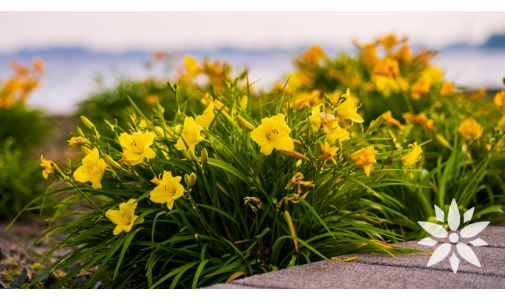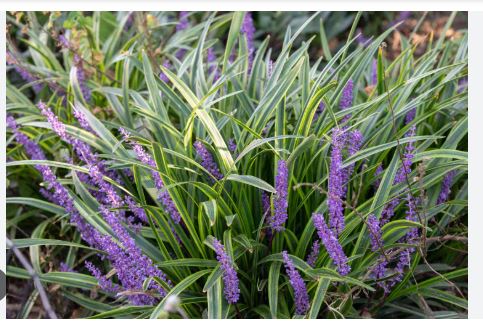
Salt-tolerant plants are naturals for harsh coastal or roadside environments, thriving where others wilt. They adapt by storing salt in leaves, excreting it through glands, or diluting it with water reserves. These resilient species bring life to sandy, saline soils with minimal care.
Their roots often play a dual role, anchoring loose soils while resisting salt’s dehydrating effects. Many form dense mats or clumps, making them ideal for stabilizing dunes or erosion-prone roadsides. Their ability to handle salt spray keeps them lush in windy, exposed areas.
Visually, these plants offer diversity—some flaunt vibrant flowers, others sport fleshy, water-storing leaves. They add color and texture to landscapes battered by salt and sun. Pollinators like bees and butterflies often flock to them, boosting local ecosystems.
Their low water needs make them drought-tolerant allies for tough climates. Once established, they shrug off neglect, needing little fertilizer or fuss. This hardiness suits them for low-maintenance gardens or public spaces along salty coasts or highways.
Ecologically, they’re heroes, preventing soil loss and creating habitats in places where salt rules. Some even improve soil by cycling nutrients, paving the way for less tolerant species. They’re tough, practical picks for sustainable landscaping in saline zones.

Salt-Tolerant Plants
Sea Lavender (Limonium perezii)
With vivid purple flowers, sea lavender adds color to salty roadside or beach plots. It stores salt in specialized cells, thriving in sandy soils under full sun. This perennial’s drought tolerance and long bloom time make it a landscaping favorite.
Saltbush (Atriplex spp.)
A shrub found in arid and coastal areas. Its silvery leaves are coated with tiny hairs that trap moisture and reduce salt uptake. Some species, like Atriplex nummularia, are used for livestock forage in saline regions.
Beach Morning Glory (Ipomoea pes-caprae)
A creeping vine with trumpet-shaped purple flowers, often seen stabilizing dunes. Its thick leaves minimize water loss, and it can handle direct salt spray. Common in tropical and subtropical coasts.
Cordgrass (Spartina spp.)
A marsh grass that dominates coastal wetlands. It excretes salt through glands on its leaves and has deep roots to anchor in muddy, saline soils. Vital for erosion control and habitat creation.
Mangroves (Rhizophora spp.)
Trees or shrubs that grow in brackish tidal zones. They filter salt at their roots or excrete it via leaves. Their stilt-like roots also protect coastlines. Red mangroves are iconic in tropical estuaries.
Sea Purslane (Sesuvium portulacastrum)
A succulent groundcover with fleshy leaves that store water and dilute salt. It’s often used in reclamation projects for saline soils and can tolerate flooding and salt spray.
Seaside Goldenrod (Solidago sempervirens)
A hardy perennial with bright yellow flowers. It thrives in dunes and marshes, using deep roots to access less saline groundwater. Attracts pollinators in harsh coastal settings.
Saltwort (Salsola kali)
A tumbleweed-like plant with needle-like leaves. It accumulates salt in its tissues, dropping leaves to shed excess. Often found in disturbed saline soils and can be invasive.
Glasswort (Salicornia spp.)
A succulent annual, also called pickleweed, with a crunchy texture. It stores salt in its juicy segments and is edible, often used in gourmet dishes or as a forage crop.
Coconut Palm (Cocos nucifera)
A tropical icon that tolerates salty coastal soils. Its deep roots tap into fresher water layers, and its waxy fronds resist salt spray. Thrives in sandy beaches with full sun.
Sea Oats (Uniola paniculata)
A tall grass with feathery seed heads, critical for dune stabilization. It tolerates salt spray and burial by sand, with roots that bind soil against erosion. Protected in many coastal areas.
Russian Olive (Elaeagnus angustifolia)
A small tree or shrub with silvery leaves, often planted in saline or degraded soils. It fixes nitrogen, improving soil, and tolerates salt through leaf adaptations, though it can be invasive.
Beach Sunflower (Helianthus debilis)
A low-growing perennial with bright yellow flowers. It tolerates salt spray and sandy soils, spreading quickly to stabilize dunes. Loves full sun and attracts pollinators.
Seashore Paspalum (Paspalum vaginatum)
A tough grass used in coastal lawns and golf courses. It excretes salt through leaf glands and thrives in wet, saline conditions. Highly resilient to flooding.
Saltmeadow Cordgrass (Spartina patens)
A wiry grass common in high marshes. It handles periodic saltwater flooding and has fine roots that trap sediment, aiding marsh growth. Key for coastal ecosystems.
Black Needlerush (Juncus roemerianus)
A spiky, rush-like plant in brackish marshes. It tolerates fluctuating salinity and oxygen-poor soils, with deep roots that prevent erosion. Supports wildlife habitats.
Sea Grape (Coccoloba uvifera)
A coastal shrub or small tree with large, round leaves. It withstands salt spray and sandy soils, forming thickets that protect dunes. Its edible fruit is a bonus.
Yaupon Holly (Ilex vomitoria)
An evergreen shrub or small tree native to coastal areas. It tolerates salt spray and poor soils, with glossy leaves and red berries that attract birds.
Wax Myrtle (Myrica cerifera)
A fragrant shrub with waxy berries. It grows in salty, sandy soils and fixes nitrogen, improving soil health. Often used as a windbreak in coastal gardens.
A colorful flowering shrub with clusters of pink, yellow, or orange blooms. It handles salt spray and drought, making it a staple in coastal landscaping. Can be invasive.
Seaside Elder (Iva imbricata)
A low shrub with fleshy leaves, common on dunes. It stores water to dilute salt and stabilizes sandy soils, often growing alongside grasses like sea oats.
Saltgrass (Distichlis spicata)
A creeping grass that forms dense mats in saline soils. It excretes salt via glands and tolerates extreme salinity, making it ideal for erosion control.
Buttonwood (Conocarpus erectus)
A mangrove relative, often a shrub or tree. It thrives in brackish or salty soils, with leathery leaves that resist salt spray. Silver varieties are ornamental.
Prickly Pear Cactus (Opuntia spp.)
A succulent cactus that tolerates saline soils in coastal deserts. Its thick pads store water, and it can handle salt by limiting uptake. Edible fruit in some species.
Marsh Elder (Iva frutescens)
A shrubby perennial found in high salt marshes. It tolerates periodic flooding and salt spray, with woody stems and small flowers that support pollinators.
Seashore Mallow (Kosteletzkya pentacarpos)
A hibiscus-like plant with pink blooms, thriving in brackish wetlands. Its deep roots handle fluctuating salinity, and it’s great for coastal restoration projects.
Ice Plant (Carpobrotus edulis)
A succulent groundcover with fleshy leaves and bright flowers. It stores water to dilute salt and stabilizes sandy, saline soils. Can be invasive in some regions.
Sea Rocket (Cakile maritima)
An annual with purple or white flowers, common on beaches. It tolerates salt spray and shifting sands, with seeds that float to colonize new dunes.
Bayberry (Morella pensylvanica)
A coastal shrub with waxy, aromatic berries. It thrives in salty soils and fixes nitrogen, enhancing soil fertility. Berries are used for candles.
Switchgrass (Panicum virgatum)
A tall grass that tolerates moderate salinity in coastal prairies. Its deep roots prevent erosion, and it’s used for biofuel and habitat restoration.
Coastal Panic Grass (Panicum amarum)
A dune grass with stiff stems, ideal for stabilizing sandy, salty soils. It handles salt spray and drought, supporting coastal ecosystems.
Sea Holly (Eryngium maritimum)
A spiky perennial with blue-gray leaves and thistle-like flowers. It thrives in salty, sandy soils and resists salt through deep roots. Striking in gardens.
Red Samphire (Salicornia rubra)
A succulent annual similar to glasswort, with reddish stems. It accumulates salt in its tissues and is edible, often pickled or used in salads.
Beach Plum (Prunus maritima)
A coastal shrub with white flowers and edible purple fruit. It tolerates salt spray and sandy soils, often found on dunes. Fruit makes great jams.
Austral Seablite (Suaeda australis)
A low-growing succulent in saline wetlands. It stores salt in its leaves and is used in land reclamation or as a forage crop in salty soils.
Salt Cedar (Tamarix spp.)
A small tree or shrub with feathery foliage. It excretes salt through glands and thrives in saline soils, though it’s invasive in some areas.